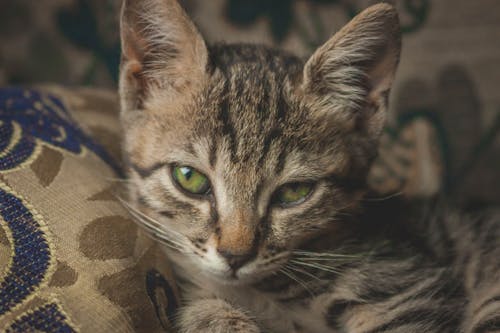
The decision to spay or neuter a cat often raises questions among new pet owners. Understanding the professional opinions of veterinarians regarding the benefits and drawbacks of this procedure can provide valuable insight.
Spaying and neutering cats can lead to several behavioral improvements. Many pet owners notice that their cats become less hyperactive and more balanced after the procedure. Common issues, such as house soiling and aggression towards other cats, can often be traced back to hormonal influences. Once a cat is spayed or neutered, the hormonal changes usually lead to a marked improvement in behavior, making for a more harmonious household.
Another significant advantage is the prevention of unwanted vocalizations and territorial marking. Unspayed female cats can produce loud yowling sounds during their heat cycles, while unneutered males may engage in aggressive marking behaviors, spraying urine throughout the home. This is particularly problematic during the spring and summer months when many cats are seeking mates. Spaying or neutering can effectively mitigate these challenges, allowing both cats and their owners to enjoy a more peaceful living environment.
Health benefits also play a crucial role in the decision to spay or neuter. Studies have shown that early spaying or neutering can reduce the risk of several health issues, including testicular cancer in males and uterine infections and certain types of cancers in females. The American Veterinary Medical Association supports these procedures as a means to enhance the overall health and longevity of pets.
However, it is essential to consider the potential downsides. All surgeries come with risks, and while spaying and neutering are routine procedures, they are not without complications. Adverse reactions to anesthesia or potential infections at the incision site are possible, which is why it is imperative to have the procedure conducted by a qualified veterinarian and to follow their pre-surgery recommendations carefully.
Weight gain is another concern following spaying or neutering. The metabolic rate of cats may decrease after the procedure, leading to potential weight gain if their food intake remains unchanged. To prevent obesity, owners should adjust their cat's diet and monitor their weight closely. Regular play and exercise can also help keep a spayed or neutered cat fit and healthy.
Moreover, once a cat is spayed or neutered, they will no longer be able to reproduce. This permanent change can be a significant factor for some owners, particularly those who may have plans for breeding. If there is any intention of breeding a cat, it is essential to weigh the decision carefully.
Before the procedure, several precautions are necessary to ensure the cat's safety. A thorough evaluation by a veterinarian is crucial. The veterinarian and anesthesiologist will assess the cat's health and suitability for surgery. Most veterinary clinics will not perform the procedure without an assessment and an appointment to ensure that the animal is prepared for the surgery.
Additionally, it is vital to fast your cat for at least 12 hours prior to the surgery. This practice helps to prevent complications related to anesthesia, such as aspiration pneumonia, which can occur if a cat vomits during the procedure. Owners should accompany their cats to the clinic on the day of the surgery to provide support and observe their behavior before and after the procedure.
Post-surgery care is equally important. After the procedure, it is recommended to limit the cat's activity to allow for proper healing. Cats may become restless as the anesthesia wears off, so keeping them in a confined space, such as a crate or carrier, can prevent them from jumping or running, which could stress their surgical site.
Additionally, using an Elizabethan collar can help prevent the cat from licking the incision site, which is crucial for avoiding infections or reopening the wound. Daily checks on the surgical site for signs of swelling, redness, or discharge will help identify potential complications early on.
Feeding post-surgery should maintain a balance of nutrients, and it may be beneficial to include iron-rich foods to aid in recovery. Avoiding overly fatty foods during the healing period is also advisable.
Spaying and neutering offer numerous advantages that can significantly improve the quality of life for both cats and their owners. Considering the health benefits, behavioral improvements, and overall well-being of the cat, spaying or neutering is a responsible choice that pet owners should seriously contemplate.

If you are contemplating whether to spay or neuter your cat, it is important to gather as much information as possible to make an informed decision. One critical aspect to consider is the timing of the procedure. Many veterinarians recommend performing the surgery at an early age, typically between five to six months, before the cat reaches sexual maturity. This timing can lead to better health outcomes and behavior management.
After the procedure, the initial days of recovery are crucial. During this period, it is essential to provide a calm and quiet environment for your cat. Cats tend to be sensitive to changes in their surroundings, and a stress-free atmosphere can significantly aid their recovery. Limit interactions with other pets and provide a cozy space where your cat can rest undisturbed.
Monitoring your cat's behavior after surgery is essential. Some cats may experience temporary changes in appetite or energy levels, which is normal. However, if you notice excessive lethargy, vomiting, or a lack of interest in food for more than 24 hours, it is crucial to contact your veterinarian for advice.
Furthermore, post-surgery follow-up appointments are often recommended to ensure proper healing and to address any concerns that may arise. These check-ups provide an opportunity for veterinarians to examine the surgical site and ensure that the healing process is on track. If any complications occur, such as bleeding or signs of infection, immediate veterinary attention is necessary.
It's also important to continue engaging your cat in play and social interaction after the initial recovery period. Once your cat has healed, regular playtime can help maintain a healthy weight and stimulate mental activity. Providing a variety of toys can keep your cat entertained and active, reducing the likelihood of behavioral issues arising due to boredom.
One of the long-term benefits of spaying or neutering is contributing to the larger goal of controlling the pet population. With so many cats in shelters waiting for homes, spaying and neutering help prevent unwanted litters and reduce the number of homeless animals. By making the responsible choice to spay or neuter your cat, you are playing a part in the community's efforts to manage pet overpopulation.
Additionally, it is worthwhile to consider the social aspects of cat ownership. Many pet owners find that spayed or neutered cats tend to have more stable personalities, making them more suitable companions. These cats are less likely to exhibit territorial behaviors or engage in fights with other cats, leading to a more harmonious home environment.
It is crucial to weigh the potential challenges against the numerous advantages of spaying or neutering. While the procedure involves surgery and recovery, the overall benefits in terms of behavior, health, and quality of life far outweigh the drawbacks. With the guidance of a trusted veterinarian, pet owners can navigate the decision-making process with confidence.
In conclusion, the choice to spay or neuter your cat is a significant one, filled with considerations that impact both the pet and the household. By understanding the procedure's benefits and potential challenges, as well as the necessary pre- and post-surgery care, you can make an informed decision that supports your cat's well-being and enhances your life together.
